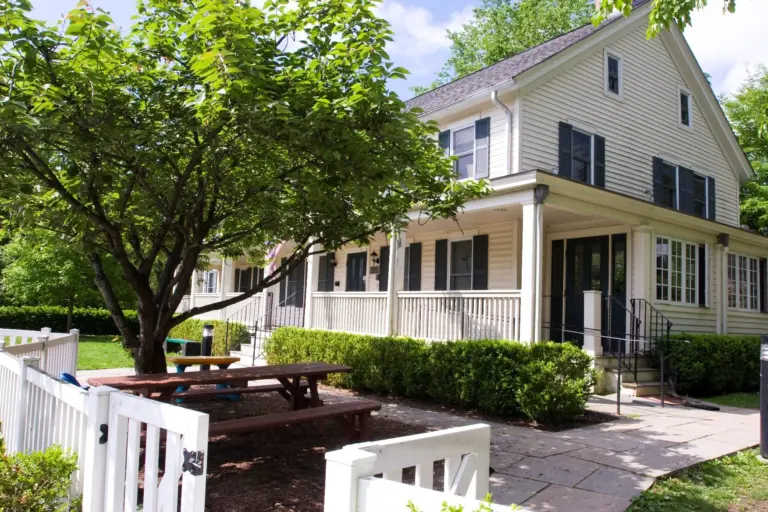
By Richard Kaufman
After making landfall near the North and South Carolina border around midnight tonight, Isaias is forecast to weaken to a tropical storm and move quickly up the U.S. east coast during the day on Tuesday.
“I want to reassure you that the Town and our team of first-responders are ready to respond to any situation that may arise from this weather event,” First Selectman Fred Camillo said on Monday in a statement.
According to the National Hurricane Center, the center of T.S. Isaias is now forecast to make its closest approach (just west of Connecticut) at approximately 6 p.m. Tuesday. Tropical storm force winds are expected to arrive a few hours sooner, at approximately 3 p.m. Tuesday afternoon.
The state is expected to experience tropical storm conditions with sustained winds of 50– 60 mph and gusts up to 70 mph which may bring down trees, limbs and power lines and block roads. Heavy rainfall of 2-4 inches is forecast and may cause minor flooding. Non-essential travel should be delayed until after the storm passes the area.
For businesses participating in the outdoor dining experience this summer, they must ensure that all tables, chairs, tents, umbrellas, etc. are brought inside no later than noon, Tuesday, August 4. Residents are advised to secure their outdoor furniture.
Boaters should check their vessels to ensure they are properly secured for the storm.
It is advisable that residents have a supply of non-perishable food, as well as water, first aid materials, flashlights and batteries, and a supply of their prescriptions.
The town will post updates as needed via the Town’s website, the reverse 9-1-1 system and the “Community Connections from Fred” newsletters.
Do not risk your safety and that of the Town’s first-responders – police, fire, EMS, Parks & Trees and Public Works – by visiting the town’s waterfront during the storm. Please shelter in place.
Storm Preparedness
Flood Preparedness – get ready if flash flooding or heavy rainfall is predicted:
- Be prepared in case of power failure – have flashlights ready, vehicles fueled.
- Move belongings and equipment out of harm’s way – this may mean elevating or moving belongings stored in basements or garages, moving a car to higher ground, etc. Protect window wells or other areas of your home if needed, based on your conditions and the storm predictions.
- Do not walk or drive through flooded areas – whether in your home, yard or road.
- Please do not discharge storm water to the sanitary sewer system – it is illegal and can cause sewer overflows.
- Remember, drainage systems are not designed for flash floods or high intensity/large or long duration storms – so preparing your home for such weather is important. Storm water typically recedes quickly after flash flooding events.
Power outages
- Stay away from downed wires. All wires should be viewed as live – with the potential to electrocute. Downed wires should be reported to 9-1-1.
- Report all outages to Eversource online at www.eversource.com, or by calling 800-286-2000.
- If a traffic signal is out – treat signals as stop signs and proceed with caution. Service will be restored as quickly as possible.
Road Blockages
- You can report blocked roads to the Greenwich Public Safety General Dispatch number at 203-622-8004.
Storm Cleanup
- Please remember – the Town will clean up downed Town trees in the right of way. Please do not put your own property’s trees/branches or other debrisout in the street – it will not be picked up.
Restoration Priorities
- Town priorities are oriented to health and safety, and focus on Greenwich Hospital, The Nathaniel Witherell nursing home, police and fire facilities, residences for the elderly, as well as wastewater collection system infrastructure (pump stations, low pressure sewer neighborhoods) and the treatment plant itself.
- From a traffic standpoint, the Town focuses on opening up major north/south and east/west arteries to facilitate both emergency and repair / cleanup response.
- DPW and the Dept. of Parks and Recreation, with its tree crews, work together with the utilities to help manage debris and get roads open.
- Road opening is often a fluid process – the road may be cleared and open but may then be closed later for a time to reset poles or allow additional cleanup. Safety: For safety’s sake, we do encourage people who were able to shelter in place to stay as local as possible in the aftermath – this helps the emergency responders and cleanup crews travel unimpeded. Also, downed wires are dangerous.
Debris: If the storm creates a significant amount of debris, it may be some time before your hauler can dispose of all your debris. Organic material – like spoiled food– should go first, and you may need to hang on to your other storm debris on yourparcel for some time until your hauler can come. The Town’s Transfer Station doeshave a limit on what it can handle, even though we do gear up to move as much material as we can after a storm.
Power restoration/returning home: If you are trying to reenter an evacuated neighborhood that was flooded, be aware that you may need to have your home inspected before power and gas service can be restored. You do not want to start up an emergency generator that has been in salt water without getting your service contractor to check it out. For house-to-house inspections, DPW pairs up its Building Inspectors with Eversource and CNG to inspect neighborhoods to restore service. Obviously, this will take time depending on the number of homes out of service that require inspection.




